Allison Bruning's Blog, page 70
February 8, 2012
Appalachia Irish and the Fight for Freedom
Appalachia Irish and the Fight for Freedom
Appalachia. The word can mean several different things. For most people in the United States, Appalachia has a negative definition. Within the beauty of the mountains the residents have become stereotyped as the poor, undereducated Scot-Irish families who depend on governmental assistance instead of providing for their own. I hate it when the people of the mountains are depicted this way. Most people forget it's not only the Scot-Irish who live in the mountains but African and Native Americans as well. A true melting pot of early America, a wide variety of ethnic backgrounds and cultures still thrive within the mountains from Georgia to Pennsylvania.
The Appalachia's have had a cultural impact on the United States beginning in 18th century when the British government used the mountains as a boundary line for the colonies. Deep within the mountains and forest laid some of the most powerful Native American tribes of the day including the Iroquois, Cherokee, Creek and Shawnee. Today the Cherokee continue to thrive in the mountains. As time progressed new cultural groups came into the area. The Moravians and Germans populated the area and created their own unique American language known as the Pennsylvania German language. We call this group today the Pennsylvania Dutch. If you visit Appalachia today, you are bound to hear more than one different dialect. This comes from the various groups that settled in the region. Some groups merged together and created their own unique cultures while others remained isolated. Each group has their own story to tell.
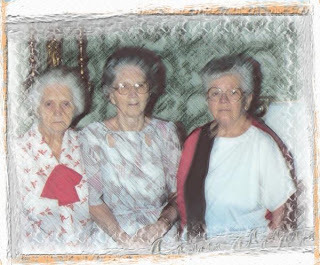 My Great Gramdmother, Stella McCardle (C),
My Great Gramdmother, Stella McCardle (C),
and her sisters, Carrie (L) and Marie (R)My Appalachian story derived from my great grandmother, Stella Virginia McCardle. Born and raised in West Virginia, she was the daughter of Appalachia Irish. The Appalachian Irish call themselves Scot-Irish to set them apart from their Irish-Catholic counterparts. It can be confusing to anyone in England, Ireland and Scotland to hear the term used because most of the Scot-Irish of America have any Scottish background. The Scot-Irish claim the term Scot in their cultural identity because their settlements inherited a Scottish flavor from their time spent at Ulster Plantation. Most of the Scot-Irish are descended from the Ulster Irish who emigrated from the Plantation of Ulster in the 17th century. They settled in the Appalachia Mountains to create a new home where they could worship freely without the persecutions they faced in Ireland from the Catholics.
The Scot-Irish originally referred to themselves as Irish until a century later when the United States saw a huge immigration of Irish during the Great Irish Famine of 1840's. Hundreds of families fled the Ireland during the great disaster, most of whom were Irish Catholic. The Irish Catholics preferred to settle in larger cities of Boston, New York or Chicago while the Scot-Irish stayed in the mountains. Yet what little interaction the two groups had with one another often lead to heated arguments. The Scot-Irish didn't want to be associated with the new groups. In response they began to use the name Scot-Irish to set themselves apart.
The Scot-Irish of America have a proud heritage that contributed to American culture. Cultural attributes included individualism, ruggedness, Indian fighters and a large anti-British sentiment. It was these attributes that led them to contribute to the fight for American freedom. During the Revolutionary War, one quarter of American troops were Scot-Irish. They often spoke Gaelic in their ranks. General George Washington stated, "If defeated everywhere else, I will make my stand for liberty, among the Scots-Irish in my native Virginia." President William McKinley said, ""The Scots-Irish were the first to proclaim for freedom in these United States; even before Lexington Scots-Irish blood had been shed for American freedom. In the forefront of every battle was seen their burnished mail and in the retreat was heard their voice of constancy". A hundred years after the Revolutionary War, the Scot Irish made themselves known in the Civil War. They have continued to fight for our freedoms since.

Appalachia. The word can mean several different things. For most people in the United States, Appalachia has a negative definition. Within the beauty of the mountains the residents have become stereotyped as the poor, undereducated Scot-Irish families who depend on governmental assistance instead of providing for their own. I hate it when the people of the mountains are depicted this way. Most people forget it's not only the Scot-Irish who live in the mountains but African and Native Americans as well. A true melting pot of early America, a wide variety of ethnic backgrounds and cultures still thrive within the mountains from Georgia to Pennsylvania.
The Appalachia's have had a cultural impact on the United States beginning in 18th century when the British government used the mountains as a boundary line for the colonies. Deep within the mountains and forest laid some of the most powerful Native American tribes of the day including the Iroquois, Cherokee, Creek and Shawnee. Today the Cherokee continue to thrive in the mountains. As time progressed new cultural groups came into the area. The Moravians and Germans populated the area and created their own unique American language known as the Pennsylvania German language. We call this group today the Pennsylvania Dutch. If you visit Appalachia today, you are bound to hear more than one different dialect. This comes from the various groups that settled in the region. Some groups merged together and created their own unique cultures while others remained isolated. Each group has their own story to tell.
 My Great Gramdmother, Stella McCardle (C),
My Great Gramdmother, Stella McCardle (C), and her sisters, Carrie (L) and Marie (R)My Appalachian story derived from my great grandmother, Stella Virginia McCardle. Born and raised in West Virginia, she was the daughter of Appalachia Irish. The Appalachian Irish call themselves Scot-Irish to set them apart from their Irish-Catholic counterparts. It can be confusing to anyone in England, Ireland and Scotland to hear the term used because most of the Scot-Irish of America have any Scottish background. The Scot-Irish claim the term Scot in their cultural identity because their settlements inherited a Scottish flavor from their time spent at Ulster Plantation. Most of the Scot-Irish are descended from the Ulster Irish who emigrated from the Plantation of Ulster in the 17th century. They settled in the Appalachia Mountains to create a new home where they could worship freely without the persecutions they faced in Ireland from the Catholics.
The Scot-Irish originally referred to themselves as Irish until a century later when the United States saw a huge immigration of Irish during the Great Irish Famine of 1840's. Hundreds of families fled the Ireland during the great disaster, most of whom were Irish Catholic. The Irish Catholics preferred to settle in larger cities of Boston, New York or Chicago while the Scot-Irish stayed in the mountains. Yet what little interaction the two groups had with one another often lead to heated arguments. The Scot-Irish didn't want to be associated with the new groups. In response they began to use the name Scot-Irish to set themselves apart.
The Scot-Irish of America have a proud heritage that contributed to American culture. Cultural attributes included individualism, ruggedness, Indian fighters and a large anti-British sentiment. It was these attributes that led them to contribute to the fight for American freedom. During the Revolutionary War, one quarter of American troops were Scot-Irish. They often spoke Gaelic in their ranks. General George Washington stated, "If defeated everywhere else, I will make my stand for liberty, among the Scots-Irish in my native Virginia." President William McKinley said, ""The Scots-Irish were the first to proclaim for freedom in these United States; even before Lexington Scots-Irish blood had been shed for American freedom. In the forefront of every battle was seen their burnished mail and in the retreat was heard their voice of constancy". A hundred years after the Revolutionary War, the Scot Irish made themselves known in the Civil War. They have continued to fight for our freedoms since.
Published on February 08, 2012 06:29
February 7, 2012
The Universal Woman
THE UNIVERSAL WOMAN
A few months ago, my husband and I befriended the local Amish family down the road from us. Nathan and Carolyn are the parents of eight boys and two daughters ranging in ages from 2 to 17 years. We had a few friendly encounters with them. After one of these encounters I learned Carolyn was involved with the children at her church just as I am in my own. We decided to spend a morning Christmas and grocery shopping. On a mild December morning we left with her oldest daughter and son for a day out on the town. It was during this time, I began to realize despite our differences in culture the bond between two married women knows no boundaries.
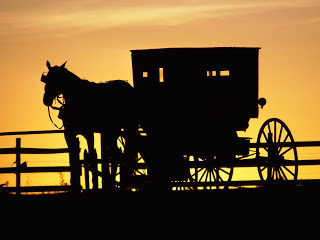 To be honest, I was excited about the trip since we decided to go together days ago. I liked spending time with Carolyn before. I'm a curious people person who loves to get to know more about different cultures. I had grown up in an area of Ohio where the Amish were, and still are, prevalent. I know what it means to be the subject of discrimination and public misconception. The Amish face those facets of mainstream America every time they step foot into our consumer driven world. Yet despite this foreknowledge I decided to be seen in public with them. When I began this journey I could never know how truly a shopping trip meant more than buying supplies.
To be honest, I was excited about the trip since we decided to go together days ago. I liked spending time with Carolyn before. I'm a curious people person who loves to get to know more about different cultures. I had grown up in an area of Ohio where the Amish were, and still are, prevalent. I know what it means to be the subject of discrimination and public misconception. The Amish face those facets of mainstream America every time they step foot into our consumer driven world. Yet despite this foreknowledge I decided to be seen in public with them. When I began this journey I could never know how truly a shopping trip meant more than buying supplies.
At first I was kind of nervous. Carolyn and I had talked about recipes and cultures before. I had no reason to think I'd offend her. Yet like all new relationships, we held onto our comfort zones. She shopped with her two children while I hit the food aisles in Wal-Mart. Moments later, we reconnect in the Christmas aisle. She told me in her church, families have exchanged names of children to buy presents for. It reminded me of the white elephant gift exchange I had done in the past. The Amish do that? One of the names on her list was her eighteen-year-old niece who has Down's Syndrome. Her niece loves to play with balls and there was a specific ball she wanted to buy for her. I learned instead of buying so many gifts for her children, the school provides for the kids. After all, as she put it to me, the season isn't about getting presents but Jesus' birth. She and Nathan do buy presents for her the two boys that aren't old enough for school. What parent of a two and four year old wouldn't want to make it fair for the younger ones too?
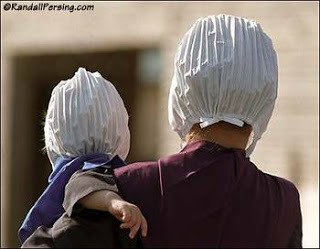 We traveled from store to store sharing our hearts with one another. We had so much fun we lost track of time. We began to understand one another bit more and found commonalities. Carolyn began to transform from just the Amish wife to a woman before my eyes. I learned tiny preferences such as Nathans' preference for nuts and honey over refined sugar and her love of cheese products. We smiled and joked around like wives do about husbands. I already knew she spoke three languages. At home they speak Swiss, in church German and in school they learn English. But what I didn't know - she reads German.
We traveled from store to store sharing our hearts with one another. We had so much fun we lost track of time. We began to understand one another bit more and found commonalities. Carolyn began to transform from just the Amish wife to a woman before my eyes. I learned tiny preferences such as Nathans' preference for nuts and honey over refined sugar and her love of cheese products. We smiled and joked around like wives do about husbands. I already knew she spoke three languages. At home they speak Swiss, in church German and in school they learn English. But what I didn't know - she reads German.
I introduced her to aspects of my husband's culture. She was amazed at the world aisle. I tend to cook more Chinese, Italian and Hispanic dishes over anything else. It was a new adventure for her. With twelve mouths to feed daily, each with their own distinctive tastes, I could see how introducing a different kind of meal could be problematic. Carolyn has to be wise in her shopping.
As the morning wore into the early afternoon, I gained a greater respect for my Amish neighbor. Wise and resourceful, Carolyn taught me no matter what culture you come from a woman is still a woman. We have compassionate heart for our children, a loving devotion to our husband, and the same emotions. A loving mother, she knows her children's distinctive personalities well. What mother wouldn't? At the end of the day, we are all someone's mother, sister, child, and wife? Don't we all have to wear the many hats womanhood brings? Womanhood, a human universal.
I wrote this piece two years ago. Since then, Nathan and Carolyn have had one more child. They have introduced us to some members of the Amish community. I have enjoyed the friendship bonds between us and their community. Since then, I have changed churches and have taken a new role at my new church. I still work with children but now I am helping Family Worship Center in Carrollton, Kentucky to plant new churches in Kentucky. That change has brought up new conversations between Nathan, Carolyn, my husband and I. Nathan and Carolyn had left their community in Indiana to start a new church in Kentucky. It seems the more we get to know each other the less different we are. We are all human.
 To be honest, I was excited about the trip since we decided to go together days ago. I liked spending time with Carolyn before. I'm a curious people person who loves to get to know more about different cultures. I had grown up in an area of Ohio where the Amish were, and still are, prevalent. I know what it means to be the subject of discrimination and public misconception. The Amish face those facets of mainstream America every time they step foot into our consumer driven world. Yet despite this foreknowledge I decided to be seen in public with them. When I began this journey I could never know how truly a shopping trip meant more than buying supplies.
To be honest, I was excited about the trip since we decided to go together days ago. I liked spending time with Carolyn before. I'm a curious people person who loves to get to know more about different cultures. I had grown up in an area of Ohio where the Amish were, and still are, prevalent. I know what it means to be the subject of discrimination and public misconception. The Amish face those facets of mainstream America every time they step foot into our consumer driven world. Yet despite this foreknowledge I decided to be seen in public with them. When I began this journey I could never know how truly a shopping trip meant more than buying supplies. At first I was kind of nervous. Carolyn and I had talked about recipes and cultures before. I had no reason to think I'd offend her. Yet like all new relationships, we held onto our comfort zones. She shopped with her two children while I hit the food aisles in Wal-Mart. Moments later, we reconnect in the Christmas aisle. She told me in her church, families have exchanged names of children to buy presents for. It reminded me of the white elephant gift exchange I had done in the past. The Amish do that? One of the names on her list was her eighteen-year-old niece who has Down's Syndrome. Her niece loves to play with balls and there was a specific ball she wanted to buy for her. I learned instead of buying so many gifts for her children, the school provides for the kids. After all, as she put it to me, the season isn't about getting presents but Jesus' birth. She and Nathan do buy presents for her the two boys that aren't old enough for school. What parent of a two and four year old wouldn't want to make it fair for the younger ones too?
 We traveled from store to store sharing our hearts with one another. We had so much fun we lost track of time. We began to understand one another bit more and found commonalities. Carolyn began to transform from just the Amish wife to a woman before my eyes. I learned tiny preferences such as Nathans' preference for nuts and honey over refined sugar and her love of cheese products. We smiled and joked around like wives do about husbands. I already knew she spoke three languages. At home they speak Swiss, in church German and in school they learn English. But what I didn't know - she reads German.
We traveled from store to store sharing our hearts with one another. We had so much fun we lost track of time. We began to understand one another bit more and found commonalities. Carolyn began to transform from just the Amish wife to a woman before my eyes. I learned tiny preferences such as Nathans' preference for nuts and honey over refined sugar and her love of cheese products. We smiled and joked around like wives do about husbands. I already knew she spoke three languages. At home they speak Swiss, in church German and in school they learn English. But what I didn't know - she reads German.I introduced her to aspects of my husband's culture. She was amazed at the world aisle. I tend to cook more Chinese, Italian and Hispanic dishes over anything else. It was a new adventure for her. With twelve mouths to feed daily, each with their own distinctive tastes, I could see how introducing a different kind of meal could be problematic. Carolyn has to be wise in her shopping.
As the morning wore into the early afternoon, I gained a greater respect for my Amish neighbor. Wise and resourceful, Carolyn taught me no matter what culture you come from a woman is still a woman. We have compassionate heart for our children, a loving devotion to our husband, and the same emotions. A loving mother, she knows her children's distinctive personalities well. What mother wouldn't? At the end of the day, we are all someone's mother, sister, child, and wife? Don't we all have to wear the many hats womanhood brings? Womanhood, a human universal.
I wrote this piece two years ago. Since then, Nathan and Carolyn have had one more child. They have introduced us to some members of the Amish community. I have enjoyed the friendship bonds between us and their community. Since then, I have changed churches and have taken a new role at my new church. I still work with children but now I am helping Family Worship Center in Carrollton, Kentucky to plant new churches in Kentucky. That change has brought up new conversations between Nathan, Carolyn, my husband and I. Nathan and Carolyn had left their community in Indiana to start a new church in Kentucky. It seems the more we get to know each other the less different we are. We are all human.
Published on February 07, 2012 10:03
February 1, 2012
You Say!
Today my guest blogger is Shad Bolt Smith of the Delaware Nation. She is a native american poet from Carrollton, Kentucky. Shad has served in the United States Army, was a police officer in Indiana and is the mother of two children.
You Say By Shad Bolt Smith of the Delaware Nation
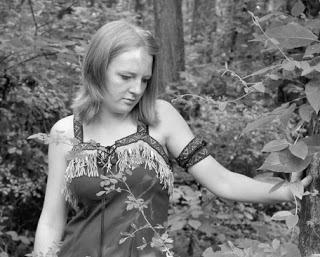
You say you had a dream a vision I heard you sayyou have this need to tell meof the things you saw this day.
YOU SAY.....you saw our peoplelaughing in the morning lightand the children's were so happytheir eyes were very bright.
YOU SAY.....your vision showed you a rainbow many colors of many thingsThe sun, glowed a pretty redand the grass a shinning green
YOU SAY.....you will cut your hairand wear the white man's skinsthey will see this difference and then will call you friend
YOU SAY.....you will sale some of our Mother Earthand maybe a horse or twowe'll have all we needthe white man promised you
YOU SAY.....you will hunt no longerwill stay with me insteadthe white man promises cattleso our people will all be fed.
NOW I SAY....I too had a dreama vision as you saya vision that was lonelyfor our people had gone away
I SAY.....In my vision, was a white man's schooland our children looked at mewith eyes not bright from laughterbut shinning White's man's blue
I SAY.....shinning in my visionI saw your grass of greenbut the shining was barbed wirea very ugly thing
NOW I SAY....."glowing" with angerwas you sun so redGlowing from the pain of our peoplered, from, the blood of our dead!
I SAY....sell the Mother Earthsell that which is not ours?what will they ask for next,the trees, the air, the stars?
I SAY...if we sell our landwe sell our children too. we sell our heart to bea white man's stupid fool.
I SAY.....our people you saw laughingwere drunk on Fire waterthe drink, that closes your eyes....to the tears, of our forefathers!
I SAY.....cut your hairand dig in Mother Earthto give up our way of life,that we have known since birth?
I SAY...I cannot stopthese fear nor tearsI hear your voicebut can't believe my ears
I SAY....You do not meanwhat you have just saidThat fire water has gone to your head.
I SAY....mixed beliefs, mixed childrenmixed customs and lawsthis, your beginningis where the red man falls
Now husband, I say.....far better than your visionplease hear my criesHokahey, Hokahey
It is a good day on which to .......to die!


You Say By Shad Bolt Smith of the Delaware Nation

You say you had a dream a vision I heard you sayyou have this need to tell meof the things you saw this day.
YOU SAY.....you saw our peoplelaughing in the morning lightand the children's were so happytheir eyes were very bright.
YOU SAY.....your vision showed you a rainbow many colors of many thingsThe sun, glowed a pretty redand the grass a shinning green
YOU SAY.....you will cut your hairand wear the white man's skinsthey will see this difference and then will call you friend
YOU SAY.....you will sale some of our Mother Earthand maybe a horse or twowe'll have all we needthe white man promised you
YOU SAY.....you will hunt no longerwill stay with me insteadthe white man promises cattleso our people will all be fed.
NOW I SAY....I too had a dreama vision as you saya vision that was lonelyfor our people had gone away
I SAY.....In my vision, was a white man's schooland our children looked at mewith eyes not bright from laughterbut shinning White's man's blue
I SAY.....shinning in my visionI saw your grass of greenbut the shining was barbed wirea very ugly thing
NOW I SAY....."glowing" with angerwas you sun so redGlowing from the pain of our peoplered, from, the blood of our dead!
I SAY....sell the Mother Earthsell that which is not ours?what will they ask for next,the trees, the air, the stars?
I SAY...if we sell our landwe sell our children too. we sell our heart to bea white man's stupid fool.
I SAY.....our people you saw laughingwere drunk on Fire waterthe drink, that closes your eyes....to the tears, of our forefathers!
I SAY.....cut your hairand dig in Mother Earthto give up our way of life,that we have known since birth?
I SAY...I cannot stopthese fear nor tearsI hear your voicebut can't believe my ears
I SAY....You do not meanwhat you have just saidThat fire water has gone to your head.
I SAY....mixed beliefs, mixed childrenmixed customs and lawsthis, your beginningis where the red man falls
Now husband, I say.....far better than your visionplease hear my criesHokahey, Hokahey
It is a good day on which to .......to die!

Published on February 01, 2012 00:00
January 31, 2012
Our Victorian Home Part 1
Our Victorian Home:
In the beginning there was David Nisbett Vance
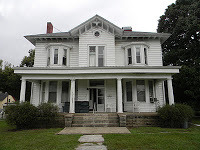 There's an old saying, "Never judge a book by its cover." That could be used today with the house my husband and I are buying. Built in March of 1882 by David Nisbett Vance, a banker, this house has withstood the tests of time. Throughout the years, it has been renovated but never restored. The house currently has nine rooms, three bathrooms, three kitchens, a full attic and a full basement. My husband and I plan to restore the house to his former glory.
There's an old saying, "Never judge a book by its cover." That could be used today with the house my husband and I are buying. Built in March of 1882 by David Nisbett Vance, a banker, this house has withstood the tests of time. Throughout the years, it has been renovated but never restored. The house currently has nine rooms, three bathrooms, three kitchens, a full attic and a full basement. My husband and I plan to restore the house to his former glory.
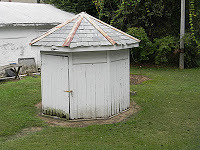 David Nisbett Vance was born in 1850 to Robert Vance and Ann Nisbett of Templepatrick, Belfast, Ireland. His father was a clerk to an insurnace company. David was the eldest of eight children. His siblings included; McCarthie Keance Vance Robert James Vance, Alfred Vance, Mary Ann Vance, Caroline Vance, Elizabeth Vance, and Matilda Jane Vance.He came to the United States alone to the New York Harbor in 1869 from Queensland, Ireland aboard the ship, Erin. In 1871, he married Margaret "Maggie" Hagan of Ireland in New York. Six years later, the couple relocated with thier children from New York to Carrollton, Kentucky, where he took charge of the John Howe and Sons Bank. David Nisbett Vance became a naturalized citizan of the Unites States in 1881 while he and his family were living in Carrollton, Kentucky. David bought the lot the house sits on February 6, 1882 from Henry Moore Windslow for $500 at 8% interest. In March of 1882, Vance started building his home. The architect for the house was G.H. Kyle of Vevay, Indiana. It was noted to be one of the finest homes in Carrollton at that time. The house was nearly completed on November 25th of 1882. The basement is a wonder for anyone who comes to our home. In the 1880's, Carrollton did not have water in any home. The lower quarters housed the kitchen and dining area. There is evidence in the basement of when the buggies use to back up into the kitchen for the Vance's to unload their supplies. We plan to restore his original quarters and turn it into a museum. The rest of the house will be restored and turned into a Bed and Breakfast.
David Nisbett Vance was born in 1850 to Robert Vance and Ann Nisbett of Templepatrick, Belfast, Ireland. His father was a clerk to an insurnace company. David was the eldest of eight children. His siblings included; McCarthie Keance Vance Robert James Vance, Alfred Vance, Mary Ann Vance, Caroline Vance, Elizabeth Vance, and Matilda Jane Vance.He came to the United States alone to the New York Harbor in 1869 from Queensland, Ireland aboard the ship, Erin. In 1871, he married Margaret "Maggie" Hagan of Ireland in New York. Six years later, the couple relocated with thier children from New York to Carrollton, Kentucky, where he took charge of the John Howe and Sons Bank. David Nisbett Vance became a naturalized citizan of the Unites States in 1881 while he and his family were living in Carrollton, Kentucky. David bought the lot the house sits on February 6, 1882 from Henry Moore Windslow for $500 at 8% interest. In March of 1882, Vance started building his home. The architect for the house was G.H. Kyle of Vevay, Indiana. It was noted to be one of the finest homes in Carrollton at that time. The house was nearly completed on November 25th of 1882. The basement is a wonder for anyone who comes to our home. In the 1880's, Carrollton did not have water in any home. The lower quarters housed the kitchen and dining area. There is evidence in the basement of when the buggies use to back up into the kitchen for the Vance's to unload their supplies. We plan to restore his original quarters and turn it into a museum. The rest of the house will be restored and turned into a Bed and Breakfast.
In December of 1883, David Nisbett Vance became the cashier at the National Bank of Carrollton. In 1886, the National Bank of Carrollton became the United States depository. The Vance's stayed in the home for three more years. On October 21, 1889 the Vances sold the house to W.W. Collins for $3000. David and Maggie had five children. May Ann Vance, born 1873; Daisy Vance, born 1875; Albert H. Vance, born 1876; Robert Vance, born 1879 and Bessie Vance, born 1884.

In the beginning there was David Nisbett Vance
 There's an old saying, "Never judge a book by its cover." That could be used today with the house my husband and I are buying. Built in March of 1882 by David Nisbett Vance, a banker, this house has withstood the tests of time. Throughout the years, it has been renovated but never restored. The house currently has nine rooms, three bathrooms, three kitchens, a full attic and a full basement. My husband and I plan to restore the house to his former glory.
There's an old saying, "Never judge a book by its cover." That could be used today with the house my husband and I are buying. Built in March of 1882 by David Nisbett Vance, a banker, this house has withstood the tests of time. Throughout the years, it has been renovated but never restored. The house currently has nine rooms, three bathrooms, three kitchens, a full attic and a full basement. My husband and I plan to restore the house to his former glory.  David Nisbett Vance was born in 1850 to Robert Vance and Ann Nisbett of Templepatrick, Belfast, Ireland. His father was a clerk to an insurnace company. David was the eldest of eight children. His siblings included; McCarthie Keance Vance Robert James Vance, Alfred Vance, Mary Ann Vance, Caroline Vance, Elizabeth Vance, and Matilda Jane Vance.He came to the United States alone to the New York Harbor in 1869 from Queensland, Ireland aboard the ship, Erin. In 1871, he married Margaret "Maggie" Hagan of Ireland in New York. Six years later, the couple relocated with thier children from New York to Carrollton, Kentucky, where he took charge of the John Howe and Sons Bank. David Nisbett Vance became a naturalized citizan of the Unites States in 1881 while he and his family were living in Carrollton, Kentucky. David bought the lot the house sits on February 6, 1882 from Henry Moore Windslow for $500 at 8% interest. In March of 1882, Vance started building his home. The architect for the house was G.H. Kyle of Vevay, Indiana. It was noted to be one of the finest homes in Carrollton at that time. The house was nearly completed on November 25th of 1882. The basement is a wonder for anyone who comes to our home. In the 1880's, Carrollton did not have water in any home. The lower quarters housed the kitchen and dining area. There is evidence in the basement of when the buggies use to back up into the kitchen for the Vance's to unload their supplies. We plan to restore his original quarters and turn it into a museum. The rest of the house will be restored and turned into a Bed and Breakfast.
David Nisbett Vance was born in 1850 to Robert Vance and Ann Nisbett of Templepatrick, Belfast, Ireland. His father was a clerk to an insurnace company. David was the eldest of eight children. His siblings included; McCarthie Keance Vance Robert James Vance, Alfred Vance, Mary Ann Vance, Caroline Vance, Elizabeth Vance, and Matilda Jane Vance.He came to the United States alone to the New York Harbor in 1869 from Queensland, Ireland aboard the ship, Erin. In 1871, he married Margaret "Maggie" Hagan of Ireland in New York. Six years later, the couple relocated with thier children from New York to Carrollton, Kentucky, where he took charge of the John Howe and Sons Bank. David Nisbett Vance became a naturalized citizan of the Unites States in 1881 while he and his family were living in Carrollton, Kentucky. David bought the lot the house sits on February 6, 1882 from Henry Moore Windslow for $500 at 8% interest. In March of 1882, Vance started building his home. The architect for the house was G.H. Kyle of Vevay, Indiana. It was noted to be one of the finest homes in Carrollton at that time. The house was nearly completed on November 25th of 1882. The basement is a wonder for anyone who comes to our home. In the 1880's, Carrollton did not have water in any home. The lower quarters housed the kitchen and dining area. There is evidence in the basement of when the buggies use to back up into the kitchen for the Vance's to unload their supplies. We plan to restore his original quarters and turn it into a museum. The rest of the house will be restored and turned into a Bed and Breakfast. In December of 1883, David Nisbett Vance became the cashier at the National Bank of Carrollton. In 1886, the National Bank of Carrollton became the United States depository. The Vance's stayed in the home for three more years. On October 21, 1889 the Vances sold the house to W.W. Collins for $3000. David and Maggie had five children. May Ann Vance, born 1873; Daisy Vance, born 1875; Albert H. Vance, born 1876; Robert Vance, born 1879 and Bessie Vance, born 1884.
Published on January 31, 2012 03:28
January 30, 2012
Hoppy's Grave
Hoppy's Grave at Camp Mowana
In my childhood I always looked forward to the end of the school year. Not because I didn't like school, mind you. I loved to learn! But as the weather began to grow warmer I knew my adventurous summer was about to begin. It was camping season! Girl Scout camp, Church camp and 4-H camp beckoned me. You see, I was and still am, a lover of the outdoors. Each and every camp had their own stories to tell. But the one camp for me, that held the most mysteries was Camp Mowana. One of the legends still told to this day is the story of a mysterious hunchback named Hoppy.
HOPPY'S GRAVE
Deep within the woods of Camp Mowana located near Mansfield, Ohio lies the secret grave site of Hoppy. Long before anyone claimed the woodlands Hoppy, a short hunchbacked man, lived by himself. He survived on his own, sleeping in caves, communing with animals and depending on the wilderness. Even though the wilderness provides much to man there are still supplies one cannot live without. Hoppy was no exception.
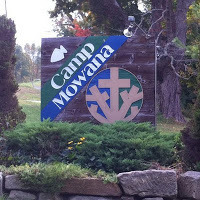 Ohio winters can be fierce. Each fall Hoppy made the long walk to Mansfield, Ohio. He gathered supplies he needed for the winter, exchanged pleasantries with the local then off he went into his wilderness home. At the melt of the snow, Hoppy returned to Mansfield, repeating his routine. This went on for years. Hoppy came and Hoppy went like clockwork. One fateful spring Hoppy never returned. Days went by. The townspeople worried. It wasn't like Hoppy to never return. The concerned citizens gathered together. They walked into the woodlands, desperate to find their little friend.
Ohio winters can be fierce. Each fall Hoppy made the long walk to Mansfield, Ohio. He gathered supplies he needed for the winter, exchanged pleasantries with the local then off he went into his wilderness home. At the melt of the snow, Hoppy returned to Mansfield, repeating his routine. This went on for years. Hoppy came and Hoppy went like clockwork. One fateful spring Hoppy never returned. Days went by. The townspeople worried. It wasn't like Hoppy to never return. The concerned citizens gathered together. They walked into the woodlands, desperate to find their little friend. Just inside a low laying cave, the townspeople found Hoppy. His frozen body lay upon a fawn. Hoppy, friend of the forest, willingly tried to save the deer from the harsh cold. Against all hopes, Hoppy failed. Heartbroken, the townspeople gathered Hoppy's body and buried him deep within his beloved forest. Next Spring the new trees near Hoppy's grave began to grow in an arch. Years passed. Each new and old tree bowed over and around his grave. Not a single tree to this day stands perfectly erect.
Seasons come and seasons go. Yet animal and foliage alike pay homage to their long, lost, wilderness friend. Soon the wilderness became a Boy Scout Camp. The legend of Hoppy's grave passed generation to generation. One day a few boys decided to visit Hoppy's Grave, not with the greatest intentions. A large beehive hung from an arched tree over Hoppy's unmarked grave. The boys disrespected Hoppy's Grave. With the anger, the bees descended in a large swarm towards the boy and chased them well away from the grave. The boys never returned.
Hoppy's Grave, now resides within the Lutheran Camp Mowana. For generations, the story passed from counselor to camper to camper's children since 1941. To this day, the forest and animals continue to honor Hoppy.
Published on January 30, 2012 07:28
January 29, 2012
Six Lines on Sunday 1-29-12
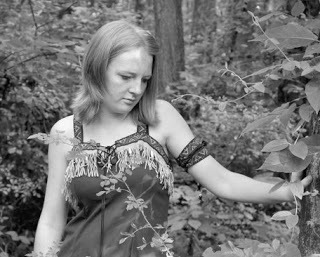
From Chapter 12 of "Calico" Book #1 - Children of the Shawnee series.
The animosity between Little Owl and Calico grew stronger with each new season. The next day, Pierre had presented Calico to the men with pride. He proclaimed Calico a worthy hunter. Little Owl had ridiculed her in front of the men. He had placed a wager with Calico. Little Owl's deep voice echoed in her mind, "The white daughter desires to walk the path of a sawano man. She, the giver of life, cannot kill. Snow Vision Seeker Buffalo Woman has twelve years. Soon the blood flows from between her legs. If her magic flows around us, she steals our ability to kill. No woman hunts. What animal honors her? Let her hunt only once. If she kills, I skin her animal, like a woman would. Should she fail, she skins my kills. The white girl must learn sawano respect!" The men had agreed.
For more of Calico's story click here http://amzn.to/tEO4d0
Reviews:
I enjoyed this book and was surprised at the depth of the characters and the complexity of the plot. The mixture of history and spirituality made for several unexpected developments in the story the kept me guessing. I liked the development of the characters and how they grew up over time. A good story and worth your time to read. - Dare, Goodreads
A love story stemming out of apparent hate is well developed, and the use of paranormal somehow makes the plot believable. I liked this book. I look forward to reading the story of Rose, Calico's sister. - Alex, Amazon
I am a very avid reader and have been so glad to find this totally spell binding book. This is the first book that I have even taken the time to leave a review on and but this book is worth the time. Full of history, great charaters and emotion! I am cant wait for the next one to come out!! PLEASE Mrs. Bruning hurry and cast your spell on me again. -Sarita, Amazon
Native American echoes loudly in this book.
This book is well, thought out well-crafted Simplistic. yet dramatic!
I was drawn into it right away, which is what I look for first when starting a new book. I was very drawn to the girl in this story. An absolute must read. - Shani, Goodreads
Allison did a great job keeping me interested. It was a wonderful read even without the demons, witches, werewolves and vampires that I normally read. Calico and Little Owl's lives were brought to life in front of me. I truly have been converted to this genre. Thank you for sharing this story!!! -Lisa, Amazon
Published on January 29, 2012 05:36
January 28, 2012
Are you a Lake Person or a River Person?
Are you a Lake Person or a River Person?
By: Allison Bruning
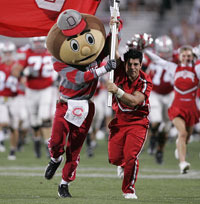 Growing up in Ohio, my sense of direction was like mostnative buckeyes. My sense of directions were defined as North – Lake Erie,South – Ohio River, East – Indian and West – Pennsylvania. A lot of timespeople would ask where I was from. I would always reply, "Up by the lake."Anyone from Ohio could automatically assume I was from around Lake Erie. When Iwas sixteen, my mother and I moved from Ohio to Texas. My sense of directionswere horrible. I had to learn to express myself as north, south, east and west.
Growing up in Ohio, my sense of direction was like mostnative buckeyes. My sense of directions were defined as North – Lake Erie,South – Ohio River, East – Indian and West – Pennsylvania. A lot of timespeople would ask where I was from. I would always reply, "Up by the lake."Anyone from Ohio could automatically assume I was from around Lake Erie. When Iwas sixteen, my mother and I moved from Ohio to Texas. My sense of directionswere horrible. I had to learn to express myself as north, south, east and west.
Fouryears ago, my hubby and I moved to Kentucky to be closer to my family in Ohio.A West Texas native, he quickly learned our culture was drastically differentthan his own. As soon as someone found out I was from Ohio they'd instantly askme, "Where are you from?" I'd tell them up by the lake and sometimes they'dreply, "Oh, I'm from the river." My poor hubby would always ask "Oh, whichriver?" We would just laugh. You see, for any Ohio born and raised person weautomatically assume the river is the Ohio River and the lake is Lake Erie. Nowthat I'm back in my own element I forget sometimes people don't understand Ohiosense of direction.
Ohio Directions Up by the Lake = North Down by the River = South Over by Pennsylvania = East Over by Indiana = West Althoughwe are from the same state, Lake and River people are completelydifferent. I grew up close to the lake.There I was accustomed to severe storms. Lake people are use to harsh winters,occasional droughts, tornadoes and the summer storms. Out on the plains when thethunder rolls it shakes the very earth you stand on and you feel its immensepower deep within your soul. Lake people are use to large fishing boats, theferries crossing to and from Canada and the rich diversity of the growingcities. Below the lake, small farm townsfueled by railroads and industry dot along the plains.
 I'velived close to the Ohio River for almost four years now. There's nothing like sitting on the river'sedge and watching the coal barges pass you by. I love to watch Indiana driverswhile I'm driving on the Kentucky side just parallel to me. On the lake I couldnever see to the other side. The river bridges fascinate me. I love being ableto cross to a new state on a bridge. The only bridge I'd ever cross across agreat lake was Mackinaw Bridge in Michigan and that's five miles long! Riverpeople are farmers. They're use to the rural country life with the occasionalmetropolis of Cincinnati, Louisville, and others. Rover folk know the power ofan Ohio River flood. They've felt the disasters and learned to survive. Theylove to fish and boat in the river. I'mproud to say I was raised by the lake but now I'm by the river person.
I'velived close to the Ohio River for almost four years now. There's nothing like sitting on the river'sedge and watching the coal barges pass you by. I love to watch Indiana driverswhile I'm driving on the Kentucky side just parallel to me. On the lake I couldnever see to the other side. The river bridges fascinate me. I love being ableto cross to a new state on a bridge. The only bridge I'd ever cross across agreat lake was Mackinaw Bridge in Michigan and that's five miles long! Riverpeople are farmers. They're use to the rural country life with the occasionalmetropolis of Cincinnati, Louisville, and others. Rover folk know the power ofan Ohio River flood. They've felt the disasters and learned to survive. Theylove to fish and boat in the river. I'mproud to say I was raised by the lake but now I'm by the river person. 
By: Allison Bruning
 Growing up in Ohio, my sense of direction was like mostnative buckeyes. My sense of directions were defined as North – Lake Erie,South – Ohio River, East – Indian and West – Pennsylvania. A lot of timespeople would ask where I was from. I would always reply, "Up by the lake."Anyone from Ohio could automatically assume I was from around Lake Erie. When Iwas sixteen, my mother and I moved from Ohio to Texas. My sense of directionswere horrible. I had to learn to express myself as north, south, east and west.
Growing up in Ohio, my sense of direction was like mostnative buckeyes. My sense of directions were defined as North – Lake Erie,South – Ohio River, East – Indian and West – Pennsylvania. A lot of timespeople would ask where I was from. I would always reply, "Up by the lake."Anyone from Ohio could automatically assume I was from around Lake Erie. When Iwas sixteen, my mother and I moved from Ohio to Texas. My sense of directionswere horrible. I had to learn to express myself as north, south, east and west.Fouryears ago, my hubby and I moved to Kentucky to be closer to my family in Ohio.A West Texas native, he quickly learned our culture was drastically differentthan his own. As soon as someone found out I was from Ohio they'd instantly askme, "Where are you from?" I'd tell them up by the lake and sometimes they'dreply, "Oh, I'm from the river." My poor hubby would always ask "Oh, whichriver?" We would just laugh. You see, for any Ohio born and raised person weautomatically assume the river is the Ohio River and the lake is Lake Erie. Nowthat I'm back in my own element I forget sometimes people don't understand Ohiosense of direction.
Ohio Directions Up by the Lake = North Down by the River = South Over by Pennsylvania = East Over by Indiana = West Althoughwe are from the same state, Lake and River people are completelydifferent. I grew up close to the lake.There I was accustomed to severe storms. Lake people are use to harsh winters,occasional droughts, tornadoes and the summer storms. Out on the plains when thethunder rolls it shakes the very earth you stand on and you feel its immensepower deep within your soul. Lake people are use to large fishing boats, theferries crossing to and from Canada and the rich diversity of the growingcities. Below the lake, small farm townsfueled by railroads and industry dot along the plains.
 I'velived close to the Ohio River for almost four years now. There's nothing like sitting on the river'sedge and watching the coal barges pass you by. I love to watch Indiana driverswhile I'm driving on the Kentucky side just parallel to me. On the lake I couldnever see to the other side. The river bridges fascinate me. I love being ableto cross to a new state on a bridge. The only bridge I'd ever cross across agreat lake was Mackinaw Bridge in Michigan and that's five miles long! Riverpeople are farmers. They're use to the rural country life with the occasionalmetropolis of Cincinnati, Louisville, and others. Rover folk know the power ofan Ohio River flood. They've felt the disasters and learned to survive. Theylove to fish and boat in the river. I'mproud to say I was raised by the lake but now I'm by the river person.
I'velived close to the Ohio River for almost four years now. There's nothing like sitting on the river'sedge and watching the coal barges pass you by. I love to watch Indiana driverswhile I'm driving on the Kentucky side just parallel to me. On the lake I couldnever see to the other side. The river bridges fascinate me. I love being ableto cross to a new state on a bridge. The only bridge I'd ever cross across agreat lake was Mackinaw Bridge in Michigan and that's five miles long! Riverpeople are farmers. They're use to the rural country life with the occasionalmetropolis of Cincinnati, Louisville, and others. Rover folk know the power ofan Ohio River flood. They've felt the disasters and learned to survive. Theylove to fish and boat in the river. I'mproud to say I was raised by the lake but now I'm by the river person.
Published on January 28, 2012 06:27
January 27, 2012
3 Ways To Get Published!
There are three ways to get published, basically. For newbies.By Toney La TrippOwner and Operator of Page Turners Publishing House
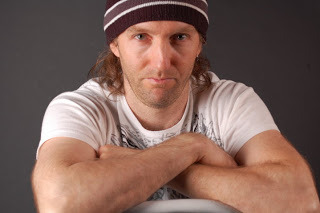 There are three ways to get published. Traditional publishing through a major pub house, going through a small press, or indie (independent) publishing on your own. There are pros and cons with each. Some with more cons than pros.
There are three ways to get published. Traditional publishing through a major pub house, going through a small press, or indie (independent) publishing on your own. There are pros and cons with each. Some with more cons than pros.
Self-pubbing means you keep all the profits. If there are any sales. It means Amazon pays you directly. It means book stores, libraries, etc pay you directly. It also means you pay up front for any expenses out of your own pocket. It means you either do your own cover work, editing, book formatting, and marketing, or pay someone else to do that for you. It means that every step of the way is your own responsibility.
Good small presses will handle the cover work, the formatting, and some marketing. They may cover editing or you may need a freelance editor. They may help you find leads for sales, help set up book signings, and lead you in the direction to maximize book sales. They take care of uploading your ebooks and setting up your print books. They take care of dealing with Amazon, Barnes and Noble, and some independent bookstores. For all of this, they take a small percentage of the book's profits.
Major pub houses MAY (and it's a BIG "may") give you a small advance. This advance, usually 5-10k, will be broken up into 3 or 4 payments. One payment when you sign, one you deliver the complete MS, one about a year later after some sales, hopefully. These installments tend to be $500-$1000 each, if that. Can you live on $1,000 for one year? No. This is after the agent takes their share. Major pub houses most likely will not have your book out to the public for at least one year after accepting it Usually 2 or more years later. One advantage is, they can more easily get a book available TO major chains such as Barnes and Noble. The reality about that is, each book store has the option of what to stock their own shelves with. What they believe will sell in their area. Which means, each title will not be stocked at all stores. Each store will stock the best sellers, simply because they are best sellers.
Another difference between a major house and a small press, when dealing with major chains such as B & N: The books B & N buys from the major house aren't paid for up front. The books B & N buys from a small chain, especially if POD, are bought up front. When this is the case, B & N doesn't like to pay up front, so they opt out of that as a whole usually, whereas they may give that title shelf space for a month or two max to see if it sells, if they don't have to pay up front.
This is the nutshell version.
I'll use this space to give the nutshell of what my company provides. I have a small press. It's called Page Turners Publishing, LLC. Yes, we are incorporated.
We offer authors signed with us worldwide distribution. We have printing facilities in the USA, the UK, and Australia. We publish both ebooks and print versions. Our ebooks are published on various platforms, such as Kindle, Nook, and Smashwords, among others. Our print books are almost immediately available through Amazon.com and Barnes and Nobles's website, bn.com. This also allows Barnes and Noble to stock our books in their stores, if they choose to. Our print books are also available internationally and can be searched through Waterstone's database and W H Smith's. That means those stores can also stock them, in the UK.
We do not offer advances for authors since we are so small. However, we do try to work with an editing team and have the authors work with editors, or editing software, to help them polish their work. We work with covers as well. We also pass along as many tips as we can regarding marketing, to help the author reach out and find new readers. The author is expected to do as much marketing as they can, on their own, just as a big press would expect the author to do.
Unlike major presses, we can offer turn around time for a book of anywhere from 3-12 months usually. Depending on how committed the author is, how well they work with editing, and the general log of the company. That is time from being accepted and signed to time that the book is available to the public to buy.
We price our books as affordably as possible to remain competitive. Yes, this means it cuts into the bottom line, hence less profit per copy. However, we do not have the view of getting rich off of a few sales. Rather, we look for mass sales. We look for long term potential.
As an example, Page Turners Publishing, LLC has been making one nickel of profit per copy of each Kindle book sold.
 There are three ways to get published. Traditional publishing through a major pub house, going through a small press, or indie (independent) publishing on your own. There are pros and cons with each. Some with more cons than pros.
There are three ways to get published. Traditional publishing through a major pub house, going through a small press, or indie (independent) publishing on your own. There are pros and cons with each. Some with more cons than pros.Self-pubbing means you keep all the profits. If there are any sales. It means Amazon pays you directly. It means book stores, libraries, etc pay you directly. It also means you pay up front for any expenses out of your own pocket. It means you either do your own cover work, editing, book formatting, and marketing, or pay someone else to do that for you. It means that every step of the way is your own responsibility.
Good small presses will handle the cover work, the formatting, and some marketing. They may cover editing or you may need a freelance editor. They may help you find leads for sales, help set up book signings, and lead you in the direction to maximize book sales. They take care of uploading your ebooks and setting up your print books. They take care of dealing with Amazon, Barnes and Noble, and some independent bookstores. For all of this, they take a small percentage of the book's profits.
Major pub houses MAY (and it's a BIG "may") give you a small advance. This advance, usually 5-10k, will be broken up into 3 or 4 payments. One payment when you sign, one you deliver the complete MS, one about a year later after some sales, hopefully. These installments tend to be $500-$1000 each, if that. Can you live on $1,000 for one year? No. This is after the agent takes their share. Major pub houses most likely will not have your book out to the public for at least one year after accepting it Usually 2 or more years later. One advantage is, they can more easily get a book available TO major chains such as Barnes and Noble. The reality about that is, each book store has the option of what to stock their own shelves with. What they believe will sell in their area. Which means, each title will not be stocked at all stores. Each store will stock the best sellers, simply because they are best sellers.
Another difference between a major house and a small press, when dealing with major chains such as B & N: The books B & N buys from the major house aren't paid for up front. The books B & N buys from a small chain, especially if POD, are bought up front. When this is the case, B & N doesn't like to pay up front, so they opt out of that as a whole usually, whereas they may give that title shelf space for a month or two max to see if it sells, if they don't have to pay up front.
This is the nutshell version.
I'll use this space to give the nutshell of what my company provides. I have a small press. It's called Page Turners Publishing, LLC. Yes, we are incorporated.
We offer authors signed with us worldwide distribution. We have printing facilities in the USA, the UK, and Australia. We publish both ebooks and print versions. Our ebooks are published on various platforms, such as Kindle, Nook, and Smashwords, among others. Our print books are almost immediately available through Amazon.com and Barnes and Nobles's website, bn.com. This also allows Barnes and Noble to stock our books in their stores, if they choose to. Our print books are also available internationally and can be searched through Waterstone's database and W H Smith's. That means those stores can also stock them, in the UK.
We do not offer advances for authors since we are so small. However, we do try to work with an editing team and have the authors work with editors, or editing software, to help them polish their work. We work with covers as well. We also pass along as many tips as we can regarding marketing, to help the author reach out and find new readers. The author is expected to do as much marketing as they can, on their own, just as a big press would expect the author to do.
Unlike major presses, we can offer turn around time for a book of anywhere from 3-12 months usually. Depending on how committed the author is, how well they work with editing, and the general log of the company. That is time from being accepted and signed to time that the book is available to the public to buy.
We price our books as affordably as possible to remain competitive. Yes, this means it cuts into the bottom line, hence less profit per copy. However, we do not have the view of getting rich off of a few sales. Rather, we look for mass sales. We look for long term potential.
As an example, Page Turners Publishing, LLC has been making one nickel of profit per copy of each Kindle book sold.
Published on January 27, 2012 05:02
January 26, 2012
Somewhere Out There
"Somewhere Out There" By Allison Bruning
When I was little, I use to dream about the day I wouldreunite with my older brother. In 1986, a year after my father lost his battleto lung cancer, the song "Somewhere Out There" appeared in the movie An American Tail. In the movie Fievaland sister, Tanya, are separated. They sing the song together looking up at themoon dreaming of the day they would be reunited. Every time I heard the song, Idreamt Eric and I was staring up at the same moon dreaming of each other. I would crank up the volume and sing my littleheart out with the dreams of my older brother.
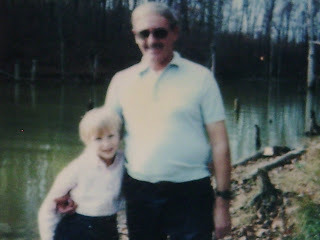 Ericand I were born twenty years apart almost to the day. I was born January 22, 1976 in Cleveland,Ohio. Eric's mother died in 1979 and a year later our father married my mother.When I was four years old, my parents and I went to dad's WWII reunion in NewJersey. There dad reunited with Eric for a brief moment and told him he had asister. I vaguely recall the union. That was the last time Eric saw dad alive.My parents divorced when I was six years old. Dad drifted in and out of my lifefor a few years. Then when I was eight, dad came back into my life and myparents started to talk of salving their marriage. By then it was too late, dadgrew ill with lung cancer. I can recall the times he was well enough to speakto me. He told me, "Peanut, I'm going to beat this. Your mom and I are going toremarry. I made a lot of mistakes in my life but this time it's going to bedifferent. We're going to be a family. We'll move to Florida and live on ahouseboat close to your brother." Despite his best efforts, dad lost the fightin July of 1985, only a month after his sixtieth birthday. His dying wish for me was simply enough. FindEric, tell him he died, he always loved him and to give him some of dad'spossessions. For twenty – six years I've searched for Eric and just when I hadgiven up Eric entered into my life.
Ericand I were born twenty years apart almost to the day. I was born January 22, 1976 in Cleveland,Ohio. Eric's mother died in 1979 and a year later our father married my mother.When I was four years old, my parents and I went to dad's WWII reunion in NewJersey. There dad reunited with Eric for a brief moment and told him he had asister. I vaguely recall the union. That was the last time Eric saw dad alive.My parents divorced when I was six years old. Dad drifted in and out of my lifefor a few years. Then when I was eight, dad came back into my life and myparents started to talk of salving their marriage. By then it was too late, dadgrew ill with lung cancer. I can recall the times he was well enough to speakto me. He told me, "Peanut, I'm going to beat this. Your mom and I are going toremarry. I made a lot of mistakes in my life but this time it's going to bedifferent. We're going to be a family. We'll move to Florida and live on ahouseboat close to your brother." Despite his best efforts, dad lost the fightin July of 1985, only a month after his sixtieth birthday. His dying wish for me was simply enough. FindEric, tell him he died, he always loved him and to give him some of dad'spossessions. For twenty – six years I've searched for Eric and just when I hadgiven up Eric entered into my life. It'sfunny how just when you least expect it the impossible happens. I had given upon finding my brother for a couple of years. A piece of me was always missing.I felt a longing to find out more about my father's side of my family but Ifelt the pain too many times. Each time my hopes were raised they'd crash down.It was a vicious cycle that had to end or I'd go mad. My father's older brotherdied in 1997 after the funeral I called one of his daughters. It felt good totalk to her. I had hoped she knew where my brother was but the first thing sheasked, "Do you know where Eric is?" I felt my hopes once again shatter. Theyhadn't heard from him in years. Determined I continued to search for him. I found Eric's law office, called him but hissecretary never told him I had called. Once again, my heart broke. I was so close tohim!
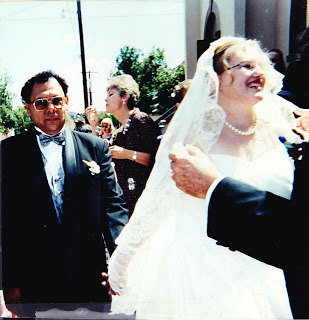
In2001, I married the love of my life. I told him about my dad and missingbrother. He urged me not to give up the fight. Last year, I searched theinternet for any Eric James Bruning I could find. I knew his birthday, thestate he lived in and that he was a lawyer. When I was little, dad had apicture of Eric with his wife. I use to stare at that picture so much so I hadmemorized his face. With a mental imagine and facts stored in my mind, Isearched MySpace, Facebook, and other social network I could think of. Finally I found an Eric Bruning in Florida andsent him a message. A year went by with no reply. My heart fell again. Thoughts rolled in myhead. Maybe he doesn't care he has a sister. I saved the picture of him he hadon his MySpace account so I would have an updated photo of him. I thought tomyself, he may not care about me but he's dad's son and I care a lot about him.I held that picture near and dear to my heart and vowed to end my searchforever. Enough was enough.
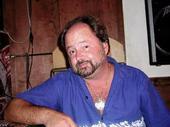 Lastyear, I received an email stating Eric Bruning Refound You. I couldn't believemy eyes. Was this a joke? If it was it was a cruel one! I read the email and myheart lifted a bit. I recognized the man in the picture. Eric was talking tome? Can this be real? I close the email and looked through other emails he sentme. I read every single one. He told me details only he would know and left mea phone number. He wanted me to call! I picked the phone and called himimmediately. We've been talking ever since. My brother loves me and I love him.
Lastyear, I received an email stating Eric Bruning Refound You. I couldn't believemy eyes. Was this a joke? If it was it was a cruel one! I read the email and myheart lifted a bit. I recognized the man in the picture. Eric was talking tome? Can this be real? I close the email and looked through other emails he sentme. I read every single one. He told me details only he would know and left mea phone number. He wanted me to call! I picked the phone and called himimmediately. We've been talking ever since. My brother loves me and I love him.
Published on January 26, 2012 06:47
January 25, 2012
Life, Embellished
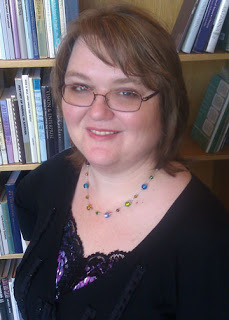
Life, Embellishedby Susan WellsBennett
When my father finished reading my first novel, The Thief of Todays and Tomorrows, hecried. I know some of those tears were for the main character; however, most ofthem reflected a mixture of emotions having to do with the kind of daughter Iwas and am. Not long after, he told me he had always known I was a writerbecause I was such a creative liar as a child.
It's true: I was a liar. Not a "dog-ate-my-homework" liar orsomeone who says "no" when they mean yes,but a true embellisher. You see, life was never quite as exciting as I expectedit to be. The humdrumness of day-to-day life made me long for excitement andintrigue. So I created it whenever and wherever I could.
I once told three schoolmates that Sweden was preparing to invade the United States.Only one of them knew I was pretending (that's the polite word for "lying," ofcourse). I claimed to be privy to secret information due to my family'slong-standing connection with the Swedish Royals – my great-great-grandfatherworked as the stable boy to the King of Sweden (this is the kernel of truthupon which my story was based). Even at the time I remember thinking that ifthese two gullible girls would just look at a map, they would immediatelyrealize my story couldn't possibly be true. Why would Sweden bother with the U.S. when Norway is right next door?
Another time, I spotted an art gallery next to where myparents were shopping and asked for permission to go inside. My parents, whoare not particularly interested in fine art, told me to go ahead. I was onlynine or ten, so they probably also told me not to touch. They would have beenbetter served by telling me not to talk. Anyway, inside the gallery, asaleswoman approached me as I was looking at some lovely landscapes. She toldme the artist was from Idaho – and Iimmediately launched into a story about how my uncle was an artist who lived inIdaho.(Kernel of truth: I have one ne'er-do-well uncle who did, in fact, live in Idaho – he was more ofan asshole than an artist, though.) I kept the story spinning pretty well untilmy father came to retrieve me and the whole web came crashing down on me.
I know my parents were embarrassed by my lying. They thoughtI didn't appreciate the life they provided for me – that I somehow believed mylife should have been better. On the contrary, it was the life they providedfor me – one full of books and lots of museum trips – that stimulated myimagination. As an only child, I learned to entertain myself early on withadventures spun from the smallest details of the world around me. Withoutrealizing it, my parents created a storyteller.
So, the next time you catch your son or daughter in a lie,take the time to evaluate the creativity
behind it. Was it just a falsehood toprotect themselves from punishment? Or was it an embellishment – a story toldfor its own sake? If it was an embellishment, try not to be too hard on the kid– someday people might love to read his or her lies!
Biography: A third-generation Arizonan, Susan Wells Bennettwas born in 1971. Having spent many years working as an editor and writer incorporate settings, she began writing novels in 2009. She lives in Youngtown, Arizona,with her husband and their two dogs.
Links to my books:
Book Junkies Library: http://www.book-junkies-library.com/SusanWellsBennett.pdfAmazon.com: http://www.amazon.com/Susan-Wells-Bennett/e/B0040DLBDI/ref=ntt_athr_dp_pel_1
Barnes & Noble: http://www.barnesandnoble.com/s/susan-wells-bennett?sort=DD&size=12&keyword=susan+wells+bennett&store=allproducts
Link to my blog: http://swellsbennett.blogspot.com/Twitter handle: @SWellsBennett
Facebook page: https://www.facebook.com/SWellsBennett
Published on January 25, 2012 05:43



